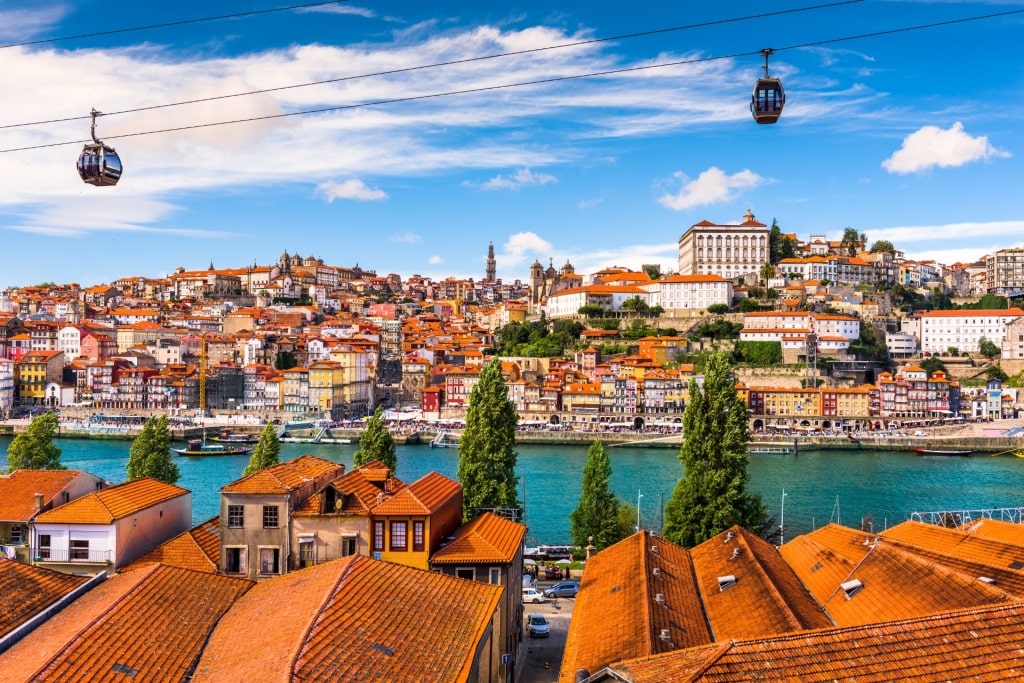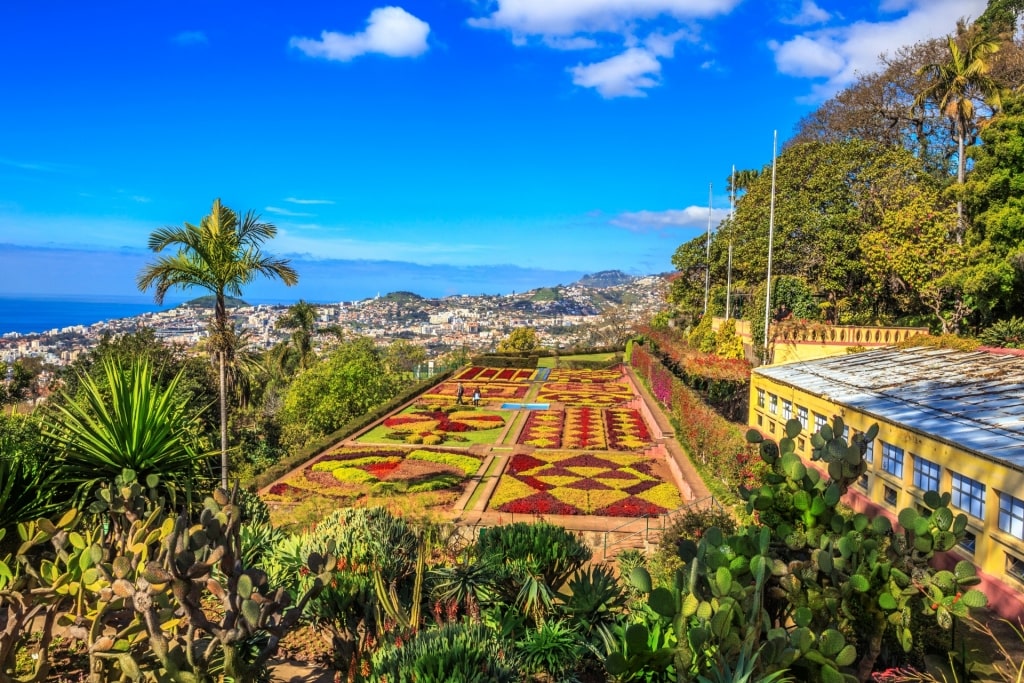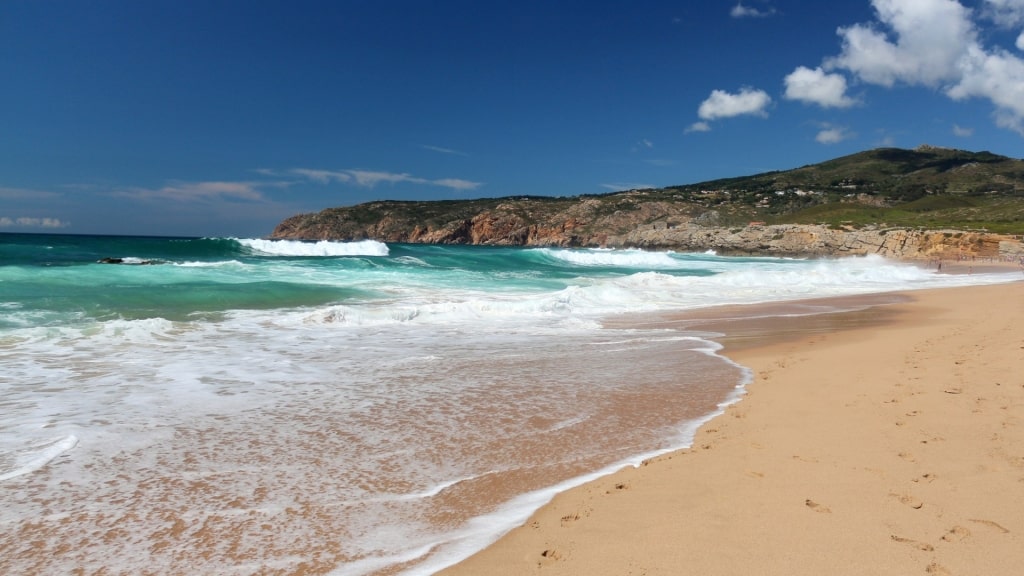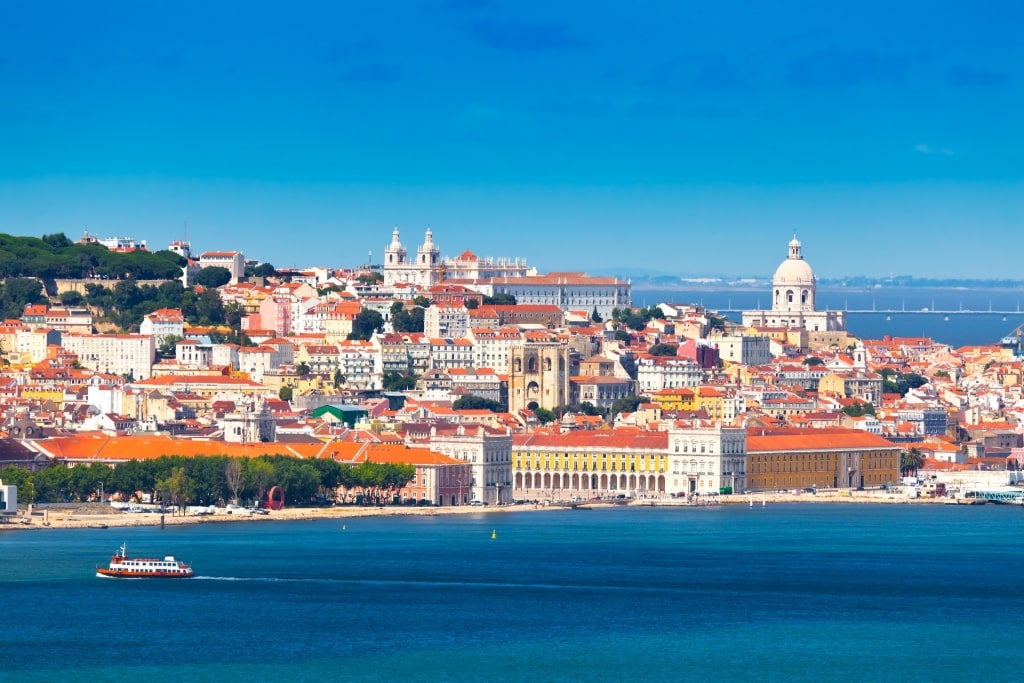The best time to visit Portugal, depending on what you want to see and do, tends to be during the spring, from April heading into early June, as well as in the fall, around September and October.
Summer weather can range from pleasantly warm to scorching hot, based on your location up and down the Iberian peninsula’s western coastline. Summer is also when Portugal is at its busiest.
And while Portugal is one of the sunniest countries in continental Europe, this nation’s proximity to the wild Atlantic and the Gulf Stream means there’s a fair amount of weather variability, especially when comparing the somewhat wetter north, around Porto, to the drier south of the country.
Visiting Portugal By Season
Summer

Porto
Typically, the Portuguese head to the beach in the hot summer, and you should too. Summer is also the dry season, with little rainfall.
Nationwide, highs settle around 83°F to 84°F (29°C) in August, although it’s a little cooler in the north, with highs of around 78°F or 79°F (26°C). August lows are still very comfortable, averaging 65°F (18°C) or so.
Toward the end of June, you can expect almost 15 hours of daylight. June is also when you can enjoy Lisbon’s Santo Antonio Festival, or the Festival of Popular Saints (Festas dos Santos Populares), as well as Porto’s São João (St. John) Festival, later in the month.
Do be warned that heatwaves sometimes descend upon Portugal during the summer, pushing temperatures well past 104°F (40°C); you’ll certainly appreciate air conditioning and a pool if this happens.
Fall
You may decide the best time to go to Portugal is early fall, and this might be a wise choice. September and October usually offer very agreeable weather, although you may have to deal with some rain.
Average Lisbon area highs in October are around 73°F (23°C). Evenings tend to hover around a refreshing but still tolerable 59°F (15°C), with winds often coming in off the Atlantic and Tagus River later in the day.
As you move into November, temperatures drop further, with averages of around 59°F (15°C). You’ll likely encounter more rain in November as well, with 11-13 days of precipitation on the whole. But given the array of shops, restaurants, galleries, and museums in Lisbon, there’s no shortage of things to enjoy on a wet day.
Winter
Winter, for most people, is not the best time to visit Portugal, particularly if you’re a sunseeker. While temperatures falling below freezing are rare, except for the Serra da Estrela Mountains in the northeast, nighttime lows can occasionally dip down to a chilly 36°F (2°C).
On a literal brighter note, Portuguese winters tend to get more sun than the rest of Europe. Average daytime highs can reach 70°F (21°C), which is still very reasonable for a visit—and of course, you won’t see as many holidaymakers as during the peak tourist season.
Spring
Springtime weather in Portugal is variable. Normally, you’ll get lots of sunshine, but you may have to contend with occasional downpours. The further south you head, the warmer the weather. Across the country, average highs are 75°F (24°C), with overall averages floating around 66°F (19°C).
Read: Lisbon vs. Porto: Which Should You Visit?

Madeira Botanical Garden
When Is Rainy Season?
As noted, winter is the rainy season, and probably not the best time to go to Portugal. The rainy season usually arrives in November and December.
November is the rainiest month of the year, with five inches (127mm) or more of precipitation. December checks in as the wettest month, with around 3.8 inches (97mm) of rain, although some spots can see four and a half inches (114mm) of rain or more.
When Is High Season?
Portugal’s high season is summer, with lots of visitors and lots of sun. Popular cities like Lisbon and Porto see an influx of travelers during the summer.
Understandably, Portugal’s beaches get busy, but there’s a lively, happy vibe, with diners enjoying long, balmy evenings in al fresco restaurants and bars.

Guincho Beach
When Is Shoulder Season?
The shoulder seasons in Portugal bookend the high season. April and May make up the shoulder season in spring, and September and October in fall.
Shoulder seasons in a sunny country like Portugal can be a great time to visit. Visitor numbers begin to thin out, and the weather can be quite lovely. Also, the chances of encountering a heat wave diminish considerably.
When Is Low Season?
The low season in Portugal is winter. You’ll get more rain, fewer daylight hours, and temperatures drop, sometimes flirting with (but rarely reaching) freezing levels.
Ocean storms are one winter highlight, though, that you can enjoy the spectacle, especially near the Portugese beach town of Nazaré, where the world’s largest waves ever surfed crash against the land. I If you’re in the country in February, check out these mind-boggling mountains of water, as well as the daredevils who ride them.

Lisbon
Now that you’re in the mood to discover more about Portugal’s wild nature, pristine beaches, and vibrant cities, browse Celebrity’s cruises to Portugal and start packing for your next Iberian holiday.



